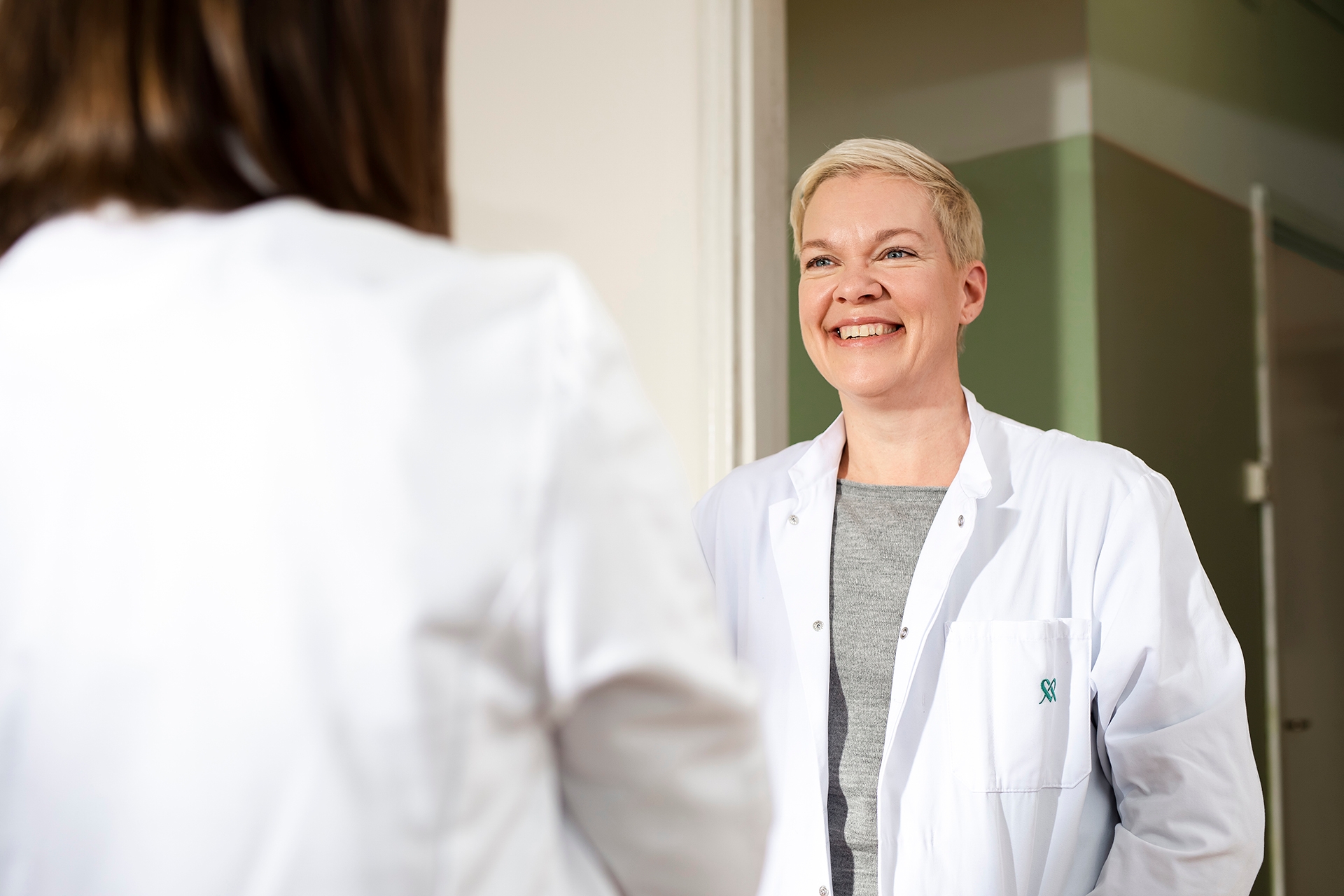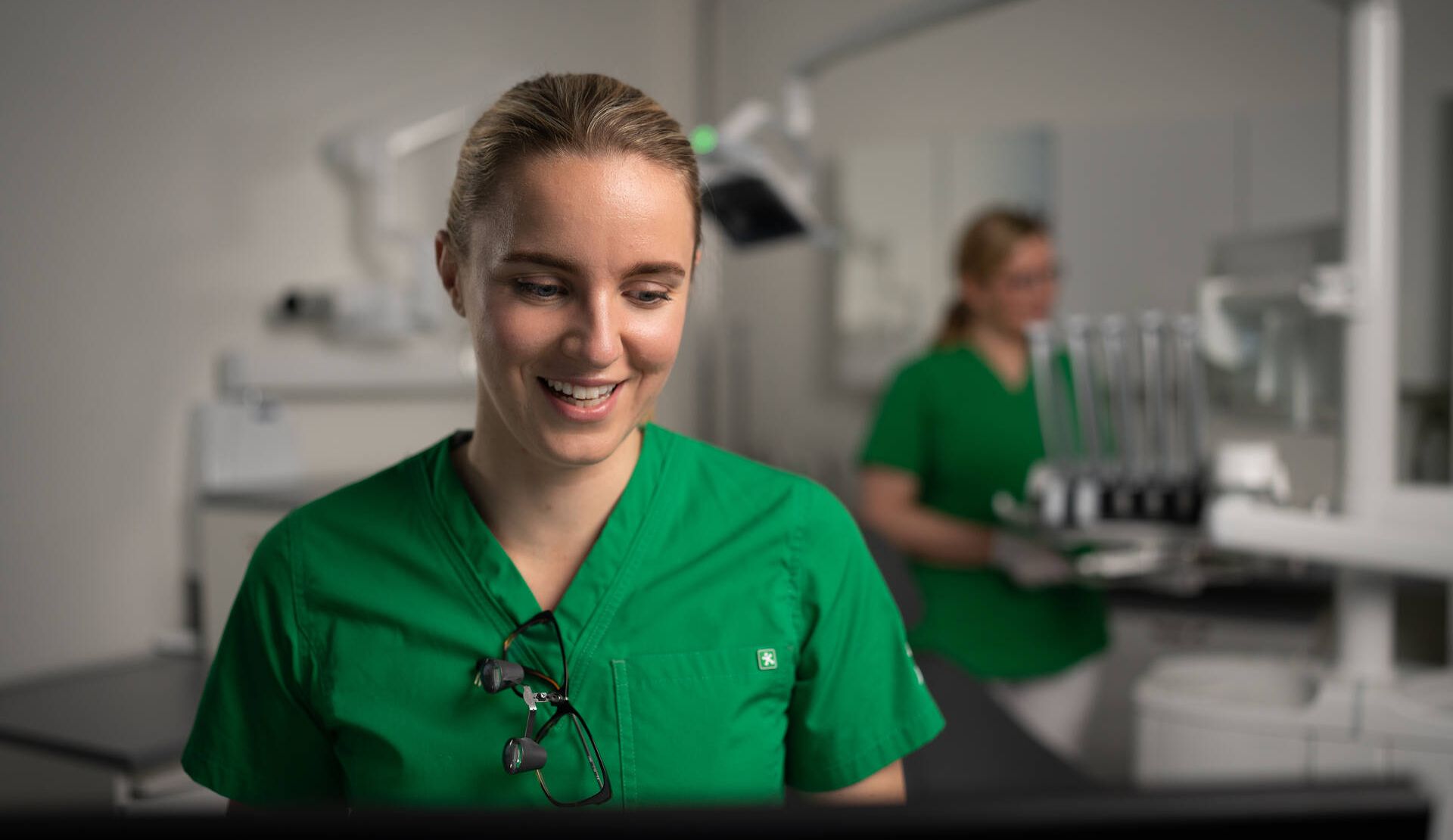
Labiaplasty
Specialist in the article

Revised 7/1/2025
Labiaplasty in brief
- Labiaplasty refers to the surgical reduction of the inner or outer labia.
- Most commonly, an undesirable shape of the labia may be a congenital condition, or the labia may have changed due to trauma or significant weight loss.
- Labiaplasty is usually performed under local anaesthesia. Patients can typically return home the same day.
When to consider labiaplasty?
The need for aesthetic genital surgery may stem from physical discomfort or aesthetic concerns. Typically, labiaplasty aims to correct asymmetry in the labia or reduce the size of large labia.
The size of the labia naturally varies between individuals, and large labia may sometimes cause skin irritation due to chafing, for example, during physical activity or when wearing tight clothing.
The most common physical symptoms include pain and tenderness in the labia in various situations. Asymmetry in the labia can thus cause a wide range of issues in a woman’s life, such as making it difficult to maintain basic hygiene, especially during menstruation.
The situation may also involve an increased risk of genital infections, and some may experience a split urine stream. A significant size difference in the labia can also negatively affect sexual life and, consequently, self-esteem.
Preparing for labiaplasty
Before the procedure, you will have the opportunity to discuss your wishes and expectations with a plastic surgeon or gynaecologist, who will assess the condition of the genital area and rule out any potential illnesses that could affect the surgery.
The plastic surgeon or gynaecologist ensures that the genital area is otherwise in good condition before the aesthetic procedure. During the initial visit, a clinical examination may be performed, and laboratory tests may be ordered if necessary.
- Nicotine Products. Nicotine products should be discontinued at least two weeks before surgery, as they impair wound healing.
- Medications. You will receive instructions regarding the use of medications and supplements if necessary.
Infections: Yeast or urinary tract infections must be treated before the procedure.
- Sensitivity of the area. The tissue to be removed from the labia often belongs to a sexually sensitive area, and this should be acknowledged before deciding on surgery. Reviewing realistic expectations with a professional is a key part of preparation.
- Break from physical activity. The operated area needs rest – a break of 4–6 weeks from physical activity, sexual intercourse, and activities like cycling is usually recommended.
- Hygiene. On the morning of the surgery, wash thoroughly but avoid excessive use of soap on the intimate area. Instructions for hair removal will be provided by the clinic – generally, the skin should not be irritated just before the procedure.
- Clothing. Prepare soft pads, comfortable underwear, and loose-fitting trousers that do not chafe the area for your recovery at home.
- Support. Ensure you have help for dressing, household chores, and shopping during recovery. A companion is often necessary, and driving is not allowed immediately after the procedure.
How labiaplasty proceeds
You will meet the operating surgeon and anaesthesiologist. They will go over the procedure, pain management, and possible anaesthesia with you and answer any questions you may have.
The surgical area is numbed with local anaesthesia to ensure no pain is felt during the procedure. Painkillers and sedatives may also be administered if needed.
The surgeon removes excess tissue from the labia and reshapes them to the desired size and shape.
After labiaplasty, it is advisable to rest for a few hours at the clinic. During this time, it will be ensured that everything is in order before you are discharged.
Recovery from labiaplasty
- Operated area. It is normal for the operated area to be swollen, tender, and possibly bleed slightly or ooze tissue fluid during the first few days.
- Hygiene. Wash with lukewarm water, avoiding scented soaps. Pat the area dry instead of rubbing. Avoid swimming, baths, and saunas for about 4–6 weeks. Itching, stinging, or slight tightness may occur during healing. Use pads, not tampons, during any discharge.
- Pain management. Pain can be alleviated with prescription or over-the-counter painkillers. Cooling gel packs or cold compresses may help with swelling – but they should not be applied directly to the skin.
- Physical activity. Light movement, such as walking, can promote circulation and healing. Avoid prolonged sitting during the first few days. Strenuous exercise, cycling, running, and stretching should be avoided for 4–6 weeks.
- Sexual activity. Sexual activity should be paused for at least four weeks or until the mucous membranes are fully healed.
- Stitches. Labiaplasty typically uses self-dissolving stitches that will fall off on their own within a few weeks.
- Follow-up: A follow-up appointment is usually scheduled about 4–8 weeks after the procedure, depending on the clinic’s practices.
- Contacting a doctor: If you experience severe pain, fever, foul-smelling discharge, or sudden swelling, contact a doctor.
- Sick leave: A few days of sick leave may be necessary, depending on the extent of the surgery and how you feel.
Prices for appointments with specialists, such as gynaecologists, dermatologists, cardiologists, orthopaedists and ophthalmologists, can be found in our appointment booking service.
| Service | Price estimate |
|---|---|
| Appointment with a specialist, 20 min Price per appointment. | from 99,80 € Without Kela reimbursement from 129,80 € |
| Appointment with a specialist, 30 min Price per appointment. | from 114,80 € Without Kela reimbursement from 144,80 € |
| Appointment with a specialist, 45 min Price per appointment. | from 142,80 € Without Kela reimbursement from 172,80 € |
| Gynaecologist's appointment, 20 min | from 69,80 € Without Kela reimbursement from 139,80 € |
| Gynaecologist's appointment, 30 min | from 74,80 € Without Kela reimbursement from 144,80 € |
| Dermatologist's appointment, 20 min | from 117,70 € Without Kela reimbursement from 147,70 € |
| Dermatologist's appointment, 30 min | from 127,80 € Without Kela reimbursement from 157,80 € |
| ENT doctor's appointment, 20 min | from 112,80 € Without Kela reimbursement from 142,80 € |
| ENT doctor's appointment, 30 min | from 133,80 € Without Kela reimbursement from 163,80 € |
| Paediatrician's appointment, 20 min | from 115,20 € Without Kela reimbursement from 145,20 € |
| Paediatrician's appointment, 30 min | from 134,80 € Without Kela reimbursement from 164,80 € |
| Orthopaedist's appointment, 20 min | from 111,80 € Without Kela reimbursement from 141,80 € |
| Orthopaedist's appointment, 30 min | from 133,80 € Without Kela reimbursement from 163,80 € |
| Appointment with a psychiatrist, 45 min Price per appointment. | from 109,80 € Without Kela reimbursement from 159,80 € |
| Appointment with a psychiatrist, 60 min Price per appointment. | from 120,80 € Without Kela reimbursement from 180,80 € |
| Ophthalmologist's appointment, 30 min | from 127,80 € Without Kela reimbursement from 157,80 € |
| Ophthalmologist's appointment, 45 min | from 138,80 € Without Kela reimbursement from 168,80 € |
Gynekologiaan liittyvät vaivat
Endometriosis
A gynaecological disease in which tissue that resembles the endometrial mucosa exists outside the uterus.
Lower abdominal pain in women
The most common causes for lower abdominal pain are either intestinal or gynaecological.
Ovarian cyst
An ovarian fluid-filled sac is often harmless and asymptomatic, but may sometimes require surgery.
Pelvic inflammatory disease
Abdominal pain, foul-smelling vaginal discharge and fever.
Urinary tract infection
A need to urinate frequently and a burning sensation or pain when urinating.
human papilloma virus (HPV)
a good tendency to heal, but it should be monitored so that the infection does not persist and progress to cancer.
Frequently asked questions about labiaplasty
During labiaplasty, a plastic surgeon reshapes the size or form of the labia according to the patient’s wishes. Excess tissue may be removed, or the labia may be reshaped to be more symmetrical.
Labiaplasty can improve physical comfort and self-confidence. The surgery can also make hygiene easier and reduce discomfort during physical activity or when wearing clothes.
Before labiaplasty, you will discuss the goals and risks of the surgery with a plastic surgeon. It is important to avoid medications that affect blood clotting and alcohol before the surgery, as well as keep the surgical area clean. Relaxing on the day of the surgery is also recommended.
Recovery from labiaplasty usually takes a few weeks to a few months. Swelling and discomfort decrease during the first weeks, and normal activities can be gradually resumed.
Labiaplasty is not suitable for everyone and should be assessed individually. The surgery is not recommended for pregnant or breastfeeding women or individuals with active infections or certain health conditions.
The cost of labiaplasty depends on the extent of the procedure and the area to be treated. The price usually includes the initial consultation, the procedure itself, any necessary hospital care, and follow-up appointments. A precise cost estimate can be obtained during a consultation with a plastic surgeon, once the scope and details of the procedure are clarified. Explore Mehiläinen’s flexible payment options as well.

